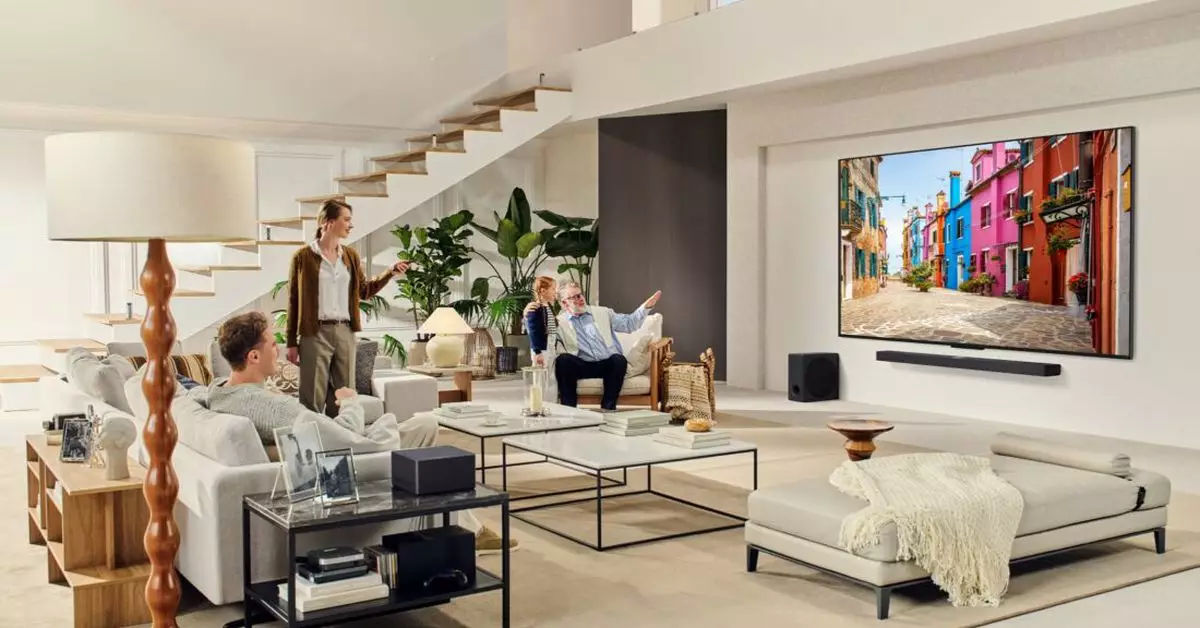In the realm of home entertainment, LG is consistently at the forefront, unveiling groundbreaking technologies that promise to revolutionize our viewing experiences. With the anticipation surrounding the 2025 Consumer Electronics Show (CES), one of the highlights is undoubtedly LG’s Zero Connect Box, which debuted with the M Series OLED earlier this year. This innovative device sends both audio and video signals wirelessly to a TV, exemplifying the future of cable-free viewing. However, beneath the enticing surface of this advancement, there are layers of implications, expectations, and questions that merit examination.
The Zero Connect Box is a testament to the rapid innovation within the television market. It enables the transmission of stunning 4K video at an impressive refresh rate of 144Hz, a crucial point for gamers who require both clarity and fluidity in their visuals. LG has positioned this technology as a solution to the ongoing clutter of cables that often plague home entertainment setups. By limiting the necessity of wires to just the power cable, LG aims to create a more streamlined and aesthetically pleasing environment.
However, while this development might seem ideal, it raises essential considerations about reliability. The effectiveness of a wireless system, especially one that transmits high-definition content, depends heavily on various environmental factors such as signal interference and latency. Consumers may find themselves wary, questioning whether cutting the cord completely will truly enhance their experience or introduce new frustrations.
As LG pushes forward with innovations in connectivity, it’s also making waves with imagery through its Dynamic QNED Color Solution. By moving away from traditional quantum dots, LG proposes a proprietary technology that promises an exceptionally wide color gamut. The company’s claim that this technology will convey “pure colors as they appear to the eye in general life” sounds impressive, yet raises skepticism regarding actual performance in everyday viewing conditions.
It’s worth noting that while impressive color fidelity is vital, it’s not the sole factor consumers consider when purchasing a television. Additional qualities, including brightness, contrast ratio, and screen uniformity, will remain critical benchmarks. As LG prepares to showcase this technology at CES, the brand will need to substantiate its claims with data from real-world testing, prompting buyers to weigh hype against actual performance.
The incorporation of artificial intelligence (AI) into LG’s TV offerings, particularly through the proposed AI button on the Magic Remote, has drawn mixed reactions. This button’s primary role includes contextual guidance about keywords and features, as well as enabling tailored movie recommendations based on viewer preferences. While the personalization this technology promises is intriguing, it comes with potential downsides.
Many consumers might find such features unnecessary or intrusive. The fundamental question remains: Do individuals desire an AI-driven experience from their television? Some viewers appreciate simplicity in their entertainment systems, preferring straightforward navigation without added complexity. Furthermore, replacing traditional input buttons with AI functions may not resonate with all users, particularly those accustomed to more conventional interfaces.
Moreover, LG’s claims regarding advanced upscaling and enhanced sound capabilities raise an eyebrow. While improving the clarity of dialogue and converting stereo audio into more immersive sound channels could enhance the overall experience, the practical execution of such features is paramount. Consumers have long been demanding clear audio without being inundated with background noise, and LG’s historical tendencies to over-promise caution against blind acceptance of these claims.
As LG teases the new QNED Evo lineup, it is essential to remember the typical cadence of CES announcements—we are often dazzled by the potential, only to be confronted later by the realistic implications of pricing and product availability. Historically, early announcements tend to elicit excitement tempered by budgetary concerns, leaving consumers anxiously waiting for more details on the actual costs of these cutting-edge technologies.
LG’s ambitious strides toward redefining home entertainment encapsulate a blend of strategic innovation and marketing spectacle. The Zero Connect Box and AI integration present remarkable ideas aimed at enhancing viewer experience. However, the ultimate success of these products will depend heavily on their execution in real-world scenarios and the extent to which they resonate with consumers’ needs and preferences. As CES approaches, stakeholders from all corners—manufacturers, critics, and consumers alike—will watch closely to see if the excitement translates into practicality.


Leave a Reply